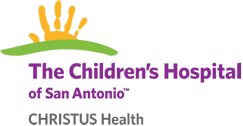The hospital stays of the structure are located on the first floor of the pavilion and on the first-floor pavilion, accessible from the main entrance. Visit this website now to know more.
The inpatient department of Geriatrics (acute geriatric unit) performs a diagnostic-therapeutic intervention on elderly with acute or chronic diseases during the exacerbation phase and tends to restore, as far as possible and as rapidly as possible, clinical stability and functional autonomy.

Patients access urgently through the Hospital Emergency Room, for transfer from other Hospital Facilities, upon request of the territorial network of Services for the elderly at the request of the general practitioner or clinic specialist.
The structure has 26 beds, distributed in rooms with two or three beds, special beds, and equipped toilets for the disabled, a gym equipped for rehabilitation. For medical emergencies, the patient can be hospitalized in support at other facilities of the organization; the presence of a geriatrician doctor is guaranteed for health care.
During the hospitalization, the patient and his family members normally refer to the “doctor tutor” who defines the patient’s care and rehabilitation plan and is available to the family.
For the patient’s needs for care, the family members refer to the nurse who will carry out a first assessment of the patient’s care needs at the time of admission, an interview with the family and a final assessment at discharge to define, together with the family and the assistant social, the next steps to follow (home care, disability practices, rehabilitation in protected facilities, etc.).
Legend and rules
The presence of a relative next to the patient is allowed, in order to allow the maintenance of contacts with the family and with the outside world, respecting the needs of the ward and the patients. It is recommended not to take autonomous initiatives with regard to the positioning of the patients (e.g., passing from the chair to the bed and vice versa) and to feed the patients but to always ask the nursing staff.
What to Bring:
Suitable footwear: flat shoes, closed with non-slip soles are essential because patients are mobilized from the bed and stimulated to self-sufficiency with the exclusion of cases expressly indicated by doctors.
What Not To Bring:
An excessive amount of money and valuables: the department staff is not liable for any theft or loss. Please limit the use of mobile phones by adjusting the ringtone to a minimum.
Resignation:
The resignation will be communicated to the family with adequate notice. At the same time, the doctor and nurse will meet the patient and relative to explain and deliver the medical and nursing report to be presented to the attending physician. Attached will also be given a sheet, to collect the medicines prescribed for discharge, at the internal pharmacy. Transportation by ambulance is authorized by medical personnel only for non-ambulatory patients. At the time of discharge, it is important to remember to request personal documentation like x-rays, echoes, CDs, blood tests, etc. delivered at the time of admission.
Important Information:
The coordinator and the nursing staff of the department are available to the patient and the family, regarding the most appropriate measures to be taken according to their specific skills.
If you want private support assistance to accompany the patient as a simple accompaniment, please contact the nursing coordinator or, in his absence, the nursing staff to fill in the specific documentation.

